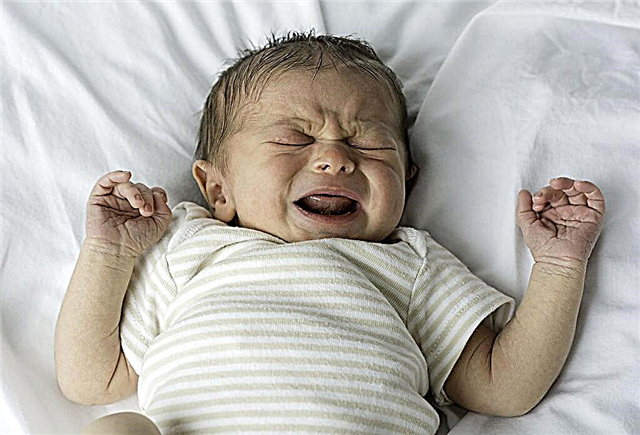
Every parent has encountered such an unpleasant phenomenon as thrush in a child's mouth at least once in his life. Most often, white dots and plaque on the tongue appear for no apparent reason. The kid begins to worry, it is unpleasant for him to eat, swallow. Where does thrush come from and how to treat it, says the famous children's doctor and author of books and articles on children's health for adults Yevgeny Komarovsky.


About the disease
The diagnosis of thrush does not exist in medicine as such. There is a certain type of stomatitis that is caused by yeast-like fungi of the genus Candida. At least a dozen candida are known to be capable of causing inflammation of the oral mucosa. They live everywhere - in the environment, in the mouth, in the intestines, in the vagina of girls.
Candida are permanent inhabitants of the human body, but they go to "conflict" only when something changes in the conditions of their habitation - humidity, body temperature. Thus, as long as the child is healthy, the fungi behave quite peacefully, but as soon as he gets sick, the immune system begins to weaken, the candida become active, become aggressive. This is how the disease, popularly called thrush, begins. The name is very accurate, as the white sores visually very much resemble curdled milk particles.


In the mouth, thrush develops when saliva loses its bactericidal properties.
It is no secret, Komarovsky says, that saliva is quite active against a variety of microorganisms, and if its biochemical parameters are normal, it can easily cope with candida. But if the saliva becomes thicker, or it is not produced enough, then stomatitis will not have to wait long.
In newborns, thrush in the mouth is often a consequence of passing through the birth canal of the mother. There, colonies of Candida of different types are quite normal, but in a child saliva immediately after birth does not yet have strong bactericidal properties, and the immune defense is still imperfect, local immunity is insufficiently developed. As a result, the baby's mouth is covered with white spots, it hurts to suck, he is worried.
Usually stomatitis caused by candidiasis is not particularly dangerous.
But in some cases, with a strong and extensive lesion, inflammation can spread to the larynx, and this is fraught with sore throat.

Causes
Saliva, according to Evgeny Komarovsky, begins to lose its bactericidal protective properties when it dries up. This can happen for a number of reasons:
- The baby is in a room that is too hot and dry.
- Mom and Dad rarely take the baby for a walk.
- The baby often and for a long time screams, while he inhales mainly with his mouth, which is why the saliva dries up.
- The child has a runny nose, nasal breathing is difficult, he has to breathe
Candida is very contagious, and therefore there may be other causes of stomatitis.


A month-old baby can "pick up" the infection from the nipple or utensils held by a person suffering from thrush. Even a mother can become this person. Also, the reason may be being in close proximity with a young cat or puppy (parents like to photograph babies this way). Even often, regurgitation can lead to stomatitis if the parents do not remove the milk mass from the mouth.
Children under one year old often begin to get sick with thrush of the oral cavity when they understand how to drag this or that object into their mouth, and actively practice it. And kids older than a year can get sick when they eat unwashed vegetables and fruits, improperly cooked meat.


Treatment and prevention according to Komarovsky
Such thrush requires special attention, in which ulcerative lesions are observed not only in the child's tongue, but also on the inner surface of the cheeks. The first case cannot be considered a disease at all, says Yevgeny Komarovsky, since for a child who is breastfed or eats adapted milk formulas, this is a variant of the norm, and nothing needs to be done with this plaque.
If white sores are found on the cheeks, you can talk about stomatitis as such, and start therapeutic actions.
First of all, Evgeny Komarovsky proposes to return the necessary protective properties to saliva so that it can cope with the raging Candida fungus on its own. To do this, you should buy a room thermometer, hang it in the children's room and make sure that always, at any time of the year and day, the air temperature does not exceed 18-20 degrees.
The second purchase you need is a humidifier with a hygrometer. Using a humidifier, you need to increase the relative humidity in the baby's room. A hygrometer will allow you to monitor its level. Humidity, at which saliva does not dry out and does not lose its bactericidal properties - 50-70%.


The child should walk a lot in the fresh air.
In the meantime, he is on the street, the room must be ventilated and wet cleaning at least once a day. You do not need to add chlorine-containing detergents to the water. Dust must be cleaned up in the nursery every day, and all the "dust collectors", which are large soft toys, books, should be removed from the room where a small child sleeps and spends a lot of time.
The child needs to be watered in sufficient quantities, because the lack of fluid in the body also causes the saliva to dry out. If the crumb drank milk, you should give him a few sips of water so that no milk remains in the mouth and a favorable environment for the growth of yeast-like fungi is not created.


Themselves white sores on the gums and cheeks of the baby should be treated with a 2% soda solution. It is easy to prepare it at home: take 2 grams of baking soda for 98 ml of boiled water.
Electronic kitchen scales are now in almost every home, and it will not be difficult to calculate the required amount of substance. If there are no scales, then soda is taken at the tip of a knife, in water - a little less than half a glass.
Mom moistens her own finger with a soda solution, previously wrapped with clean gauze or bandage, and gently treats the sores in her mouth with this finger. An older child who already understands how to rinse and spit out liquid can simply be given such a mouthwash solution.
In case of severe candidal lesions, you can lubricate the ulcers with the Holisal gel - it will additionally have an analgesic effect.


What can’t be done?
You can not cauterize white dots in the mouth with iodine or brilliant green, as well as alcohol and alcohol solutions.
You can not give a child with thrush in the mouth antibiotics, as well as smear antibiotics directly on the sores in the oral cavity.
Do not remove plaque from the cheeks and tongue mechanically, manually.
You cannot take a child to kindergarten with signs of stomatitis, since in one day in a group he will infect up to 70-80% of his peers with candida.
During treatment, it is not necessary to give the child sweet food, candida like sweets. A nursing mother should exclude sweets from her own diet.

You will learn more about fungal infections in the mouth in children in the following video.



